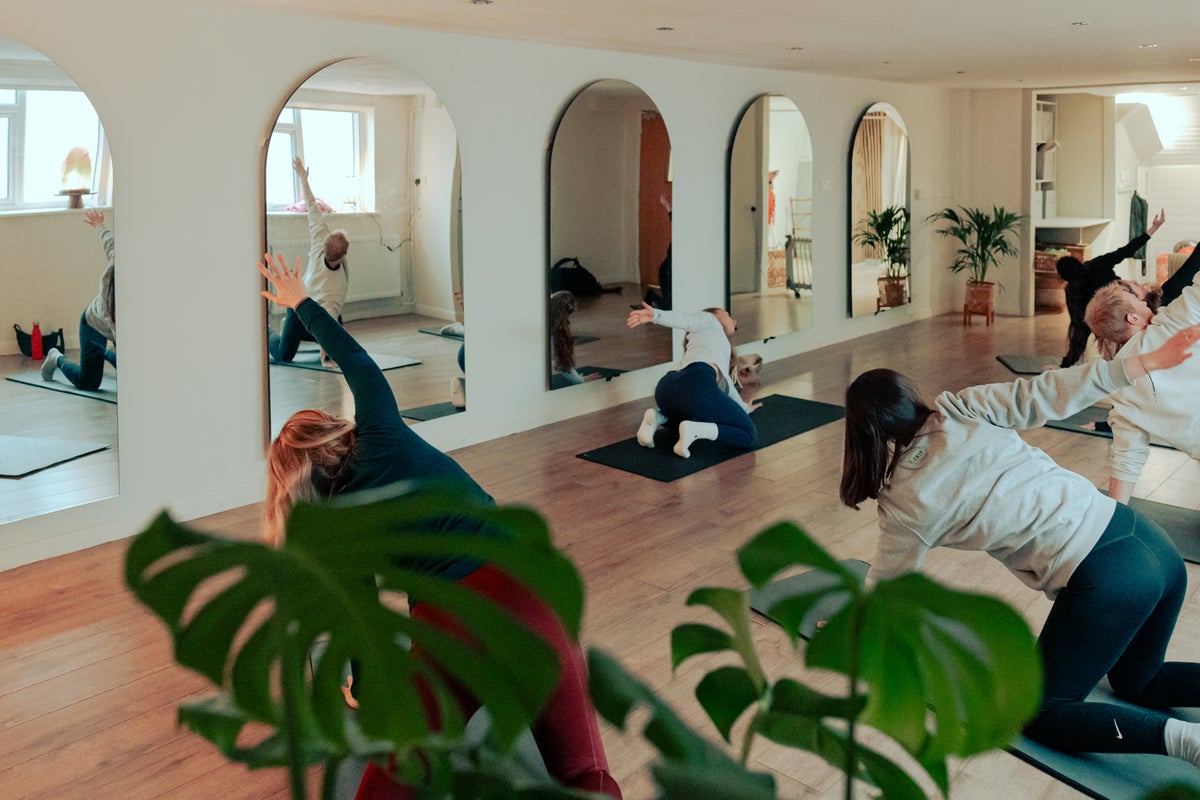
Joseph Pilates concocted his world-conquering fitness methodology while imprisoned in a First World War internment camp on the Isle of Man. Now, more than 100 years on, the practice has enjoyed a renewed surge in popularity.
“If you've ever wondered why Pilates has such a loyal following, the answer lies in how it makes you feel – strong, connected and grounded in your body,” Pilates instructor and Reform Wellness Studio founder Kasey Lach tells me.
It has wide appeal too, with instructors able to adapt exercises to suit people of varying fitness, experience and mobility levels. However, some movements have a more universal application than others, and below Lach has shared three of her favourites which hold plenty of benefits for pretty much anyone.
“These Pilates-based exercises are simple, effective and can be done almost anywhere,” she says. “While these movements are generally safe and beneficial, please note that attending a class with a trained practitioner will provide more thorough guidance, personalised cueing and proper technique tailored to your individual needs.”
How to do Pilates instructor Kasey Lach’s three go-to moves
Prone back extension
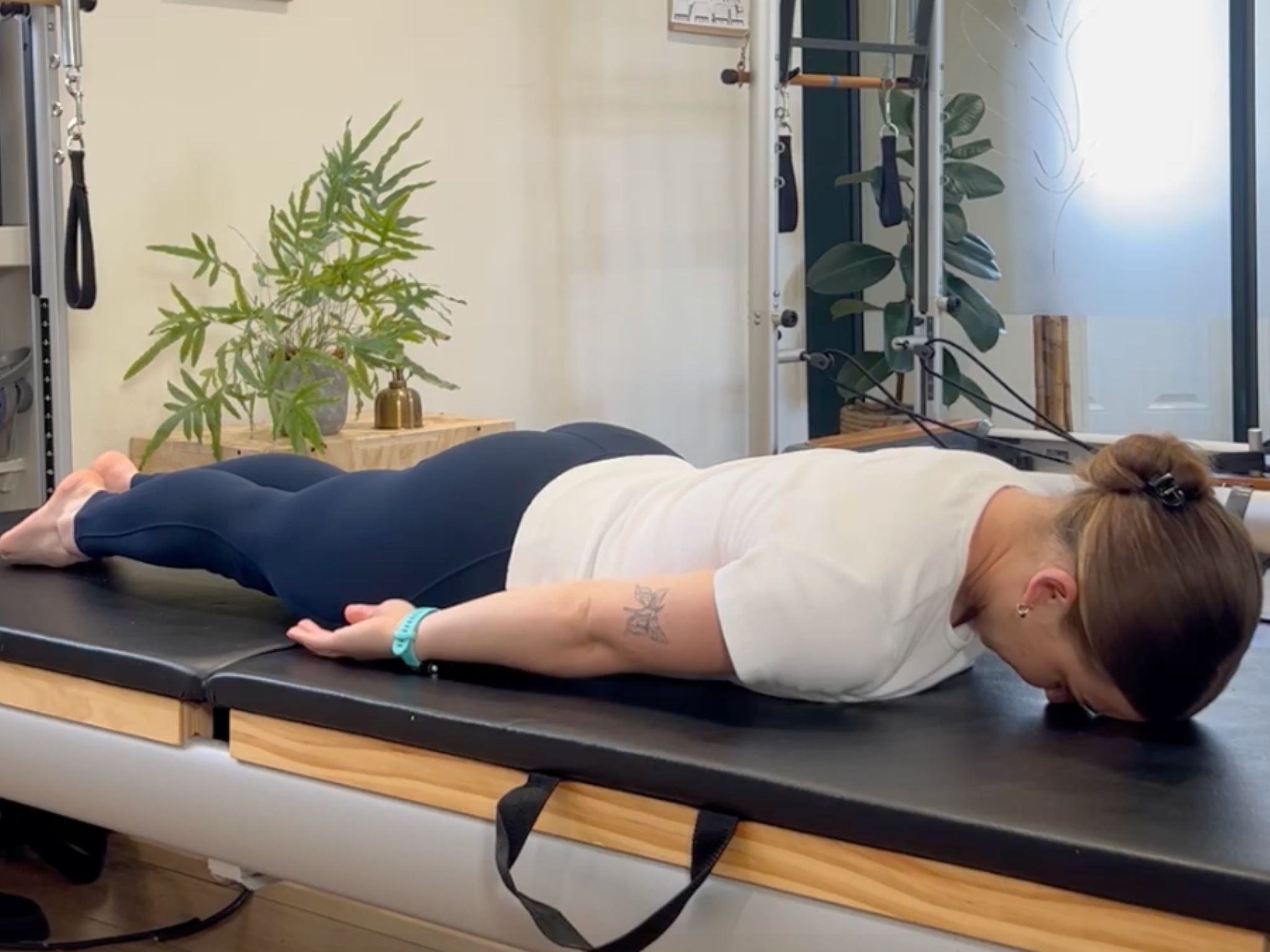
How to do it
Lie prone – or face down – with your forehead on the mat and your arms by your sides, palms up. Keep your legs together with your feet gently pointed throughout.
- Inhale: prepare.
- Exhale: set your core muscles then lift your head and chest slightly off the mat. Think about sliding your shoulders away from your ears.
- Inhale: slowly lower your trunk and head to return to the start position.
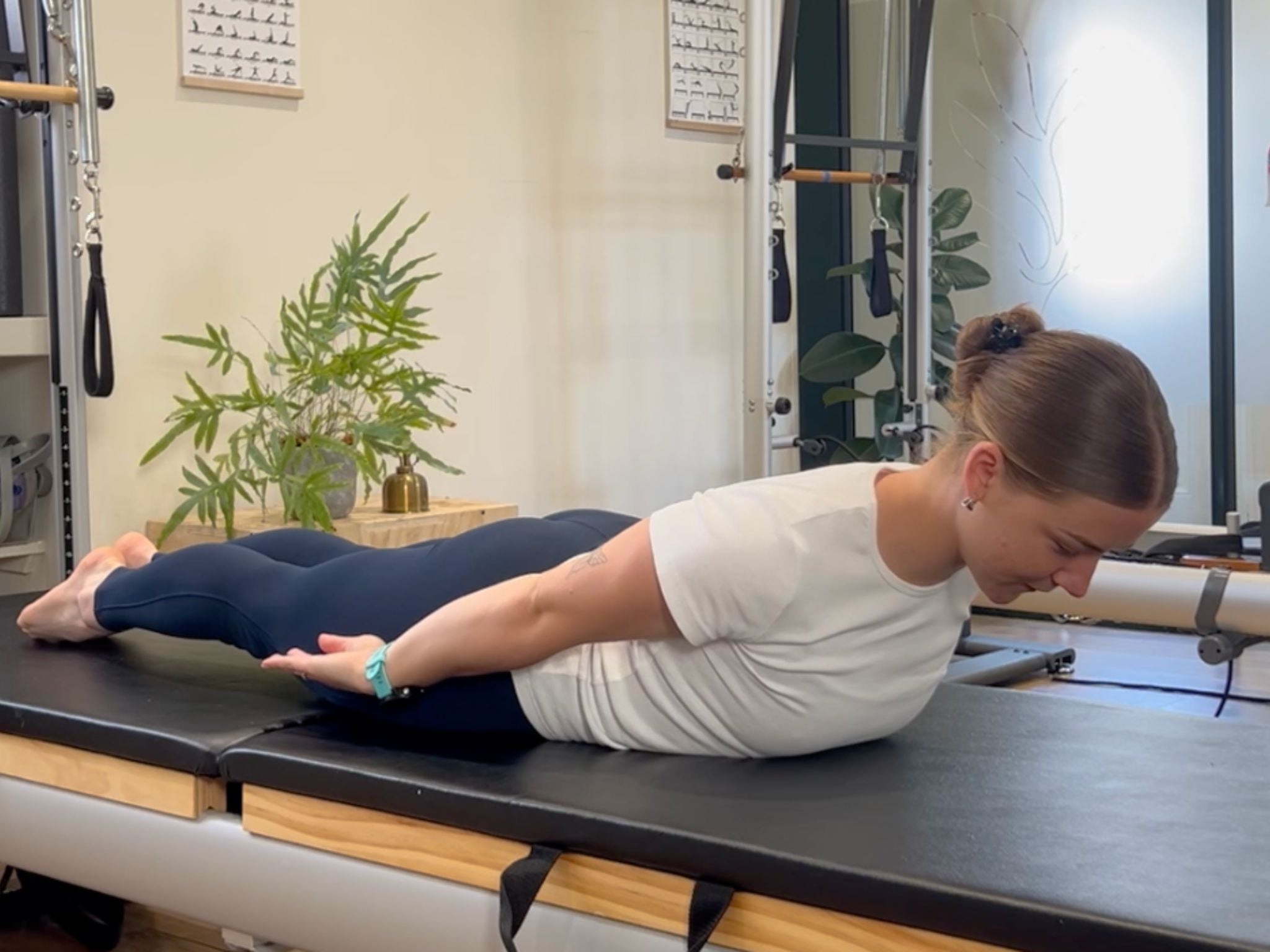
Modifications
“If you experience neck or disc-related pain, avoid lifting your head and trunk. Instead, focus on core engagement and activating the deep neck flexors using a technique called the ‘chin nod’,” Lach advises.
This technique involves gently tucking your chin towards your chest, providing a stretch across the back of your neck and the muscles around the cervical (uppermost) region of your spine.
Top tip
“Keep your head aligned with your spine throughout the exercise. Maintain abdominal engagement, potentially with a light posterior tilt of the pelvis [the front of the pelvis is higher than the back], to protect the lower back.”
Benefits of the prone back extension
This exercise targets the spinal extensors (the group of muscles responsible for straightening the spine), with support from the abdominals for spinal protection, Lach explains.
By moving and strengthening these areas, it can “improve coordination of the core muscles, enhance scapular stability and train the body to lift against gravity using controlled, skilled activation,” she adds.
Side bend
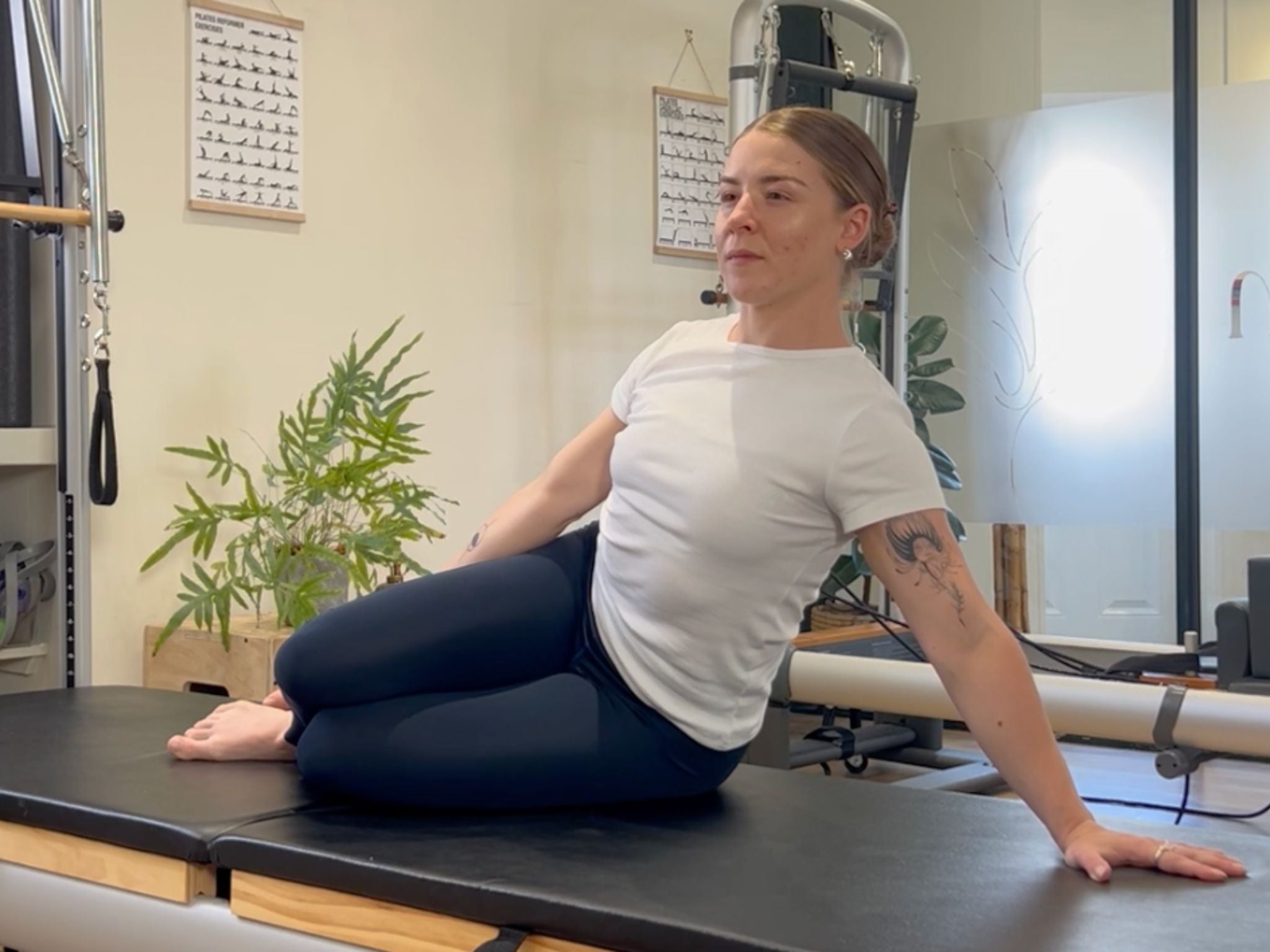
How to do it
Lie on your side then bend your knees to a right angle while keeping your feet in line with your torso. Place your top foot on the mat in front of your bottom foot for stability. Press the hand of your lower arm into the mat, underneath your shoulder, and extend it so your torso is almost upright.
- Inhale: straighten both legs and lift your pelvis towards the ceiling until your legs and torso form a straight line. As you do this, raise your top arm so it extends vertically upwards from your shoulder.
- Exhale: lift the pelvis slightly higher into a laterally flexed position and reach your top arm overhead.
- Inhale: lower your pelvis until your legs and torso form a straight line. As you do this, return your top arm to vertical.
- Exhale: lower back down to the starting position.
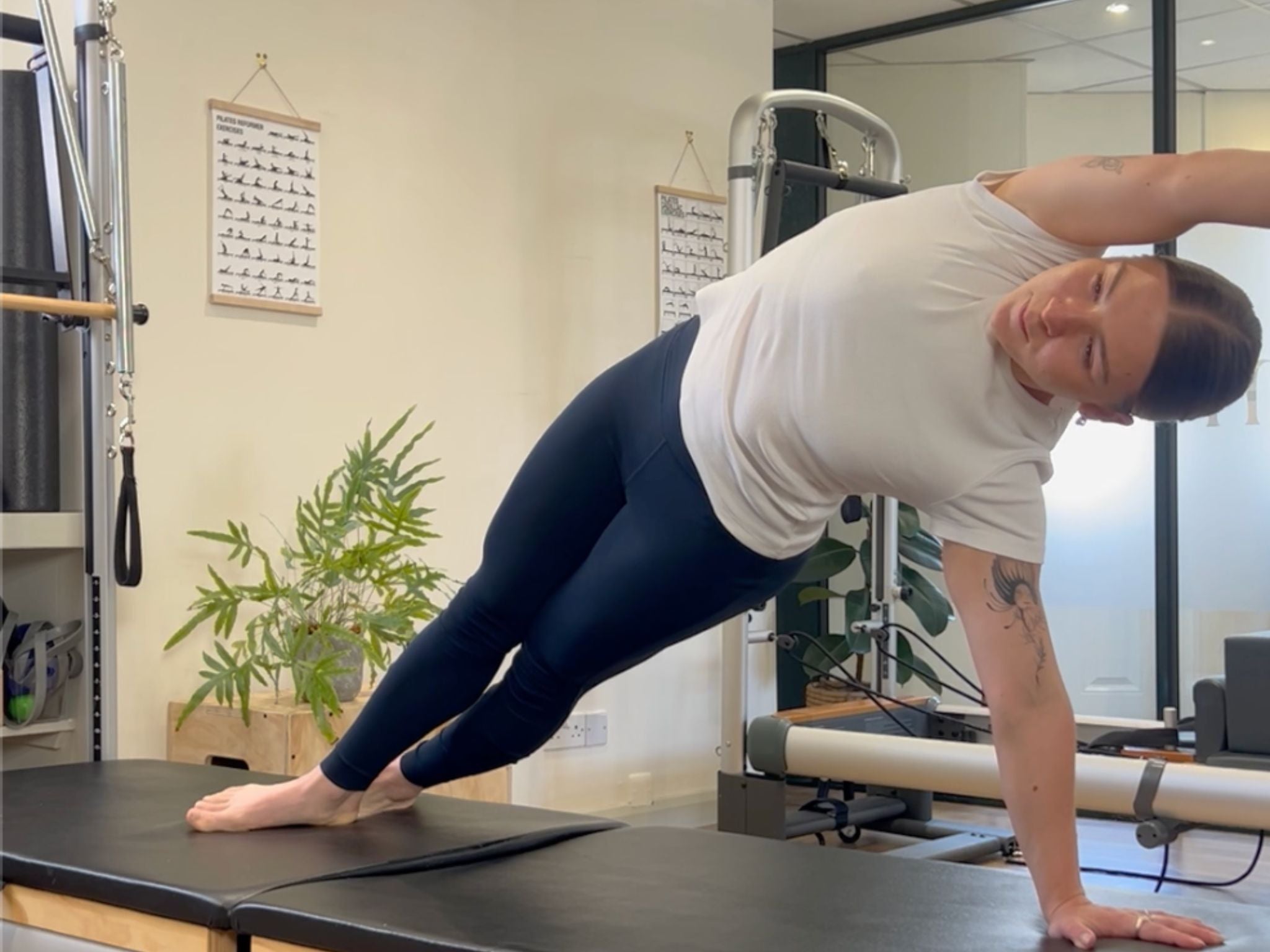
Modifications
“For a more gentle version of this movement, perform it on your elbow with both knees bent, keeping them in contact with the ground throughout for added support,” Lach recommends.
Top tip
“Initiate the movement from the oblique abdominal muscles [which run along either side of your trunk]. Use the gluteus medius [on either side of the buttocks] to lift the lower side of the pelvis up and draw the shoulder blades down and back throughout the exercise.”
Benefits of the side bend
This exercise strengthens the obliques, scapular (shoulder blade) stabilisers, lumbar-stabilising quadratus lumborum and gluteus medius muscles, says Lach.
This will not only help you develop healthier shoulders and greater control of your core muscles, but also increase mobility in your spine for bending motions.
Pelvic curl
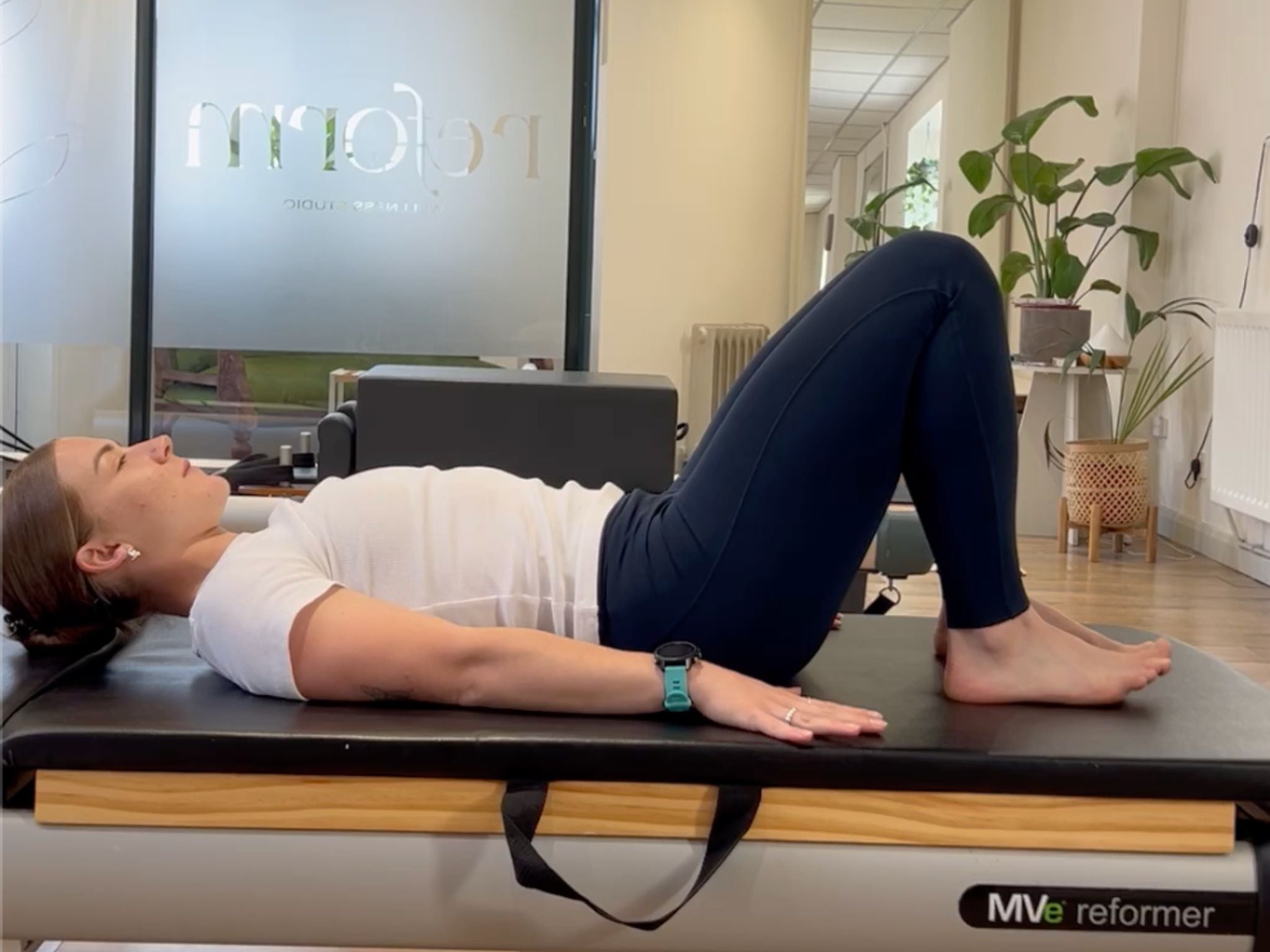
How to do it
Lie on your back with your knees bent and your feet flat on the mat, hip-width apart. Keep your neck and shoulders relaxed.
- Inhale: prepare.
- Exhale: engage your core and begin to curl your pelvis then spine off the mat, one vertebra at a time.
- Inhale: hold the top position. Your pelvis should be in maximum posterior tilt, with your thighs and torso forming a straight line, and you should feel a stretch in the hip flexors – the muscles on the front of the hips and upper thighs.
- Exhale: slowly lower your spine one vertebra at a time until the tailbone touches the mat.
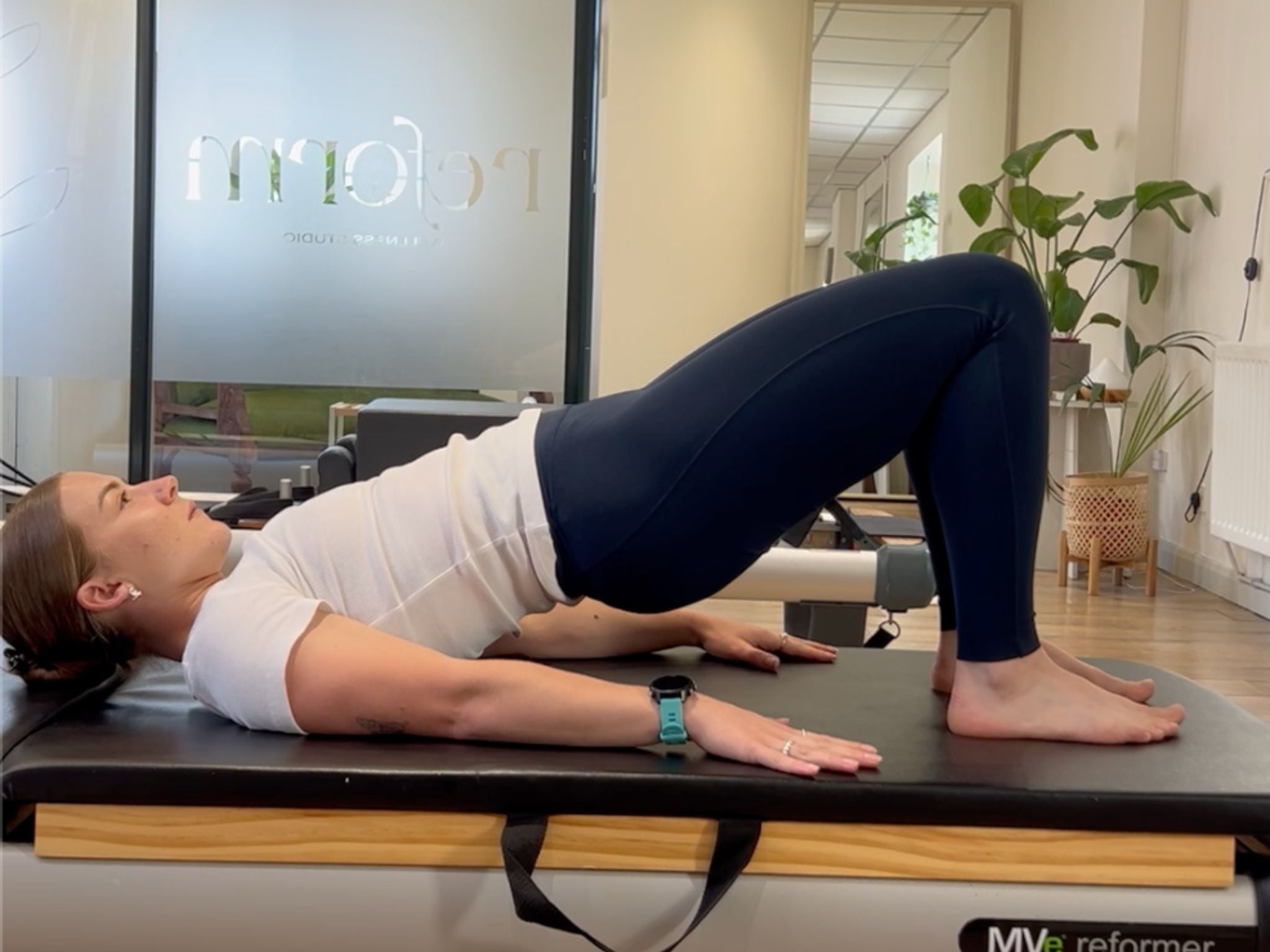
Modifications
“If you have disc-related conditions, avoid deep lumbar flexion [curling of the lower spine],” Lach says. “Instead, maintain a neutral spine and pelvis as you lift, and work within a pain-free range.”
Top tip
“Tilt the pelvis by pulling the pubic bone towards the chin to create deep lumbar flexion. Deliberately place one vertebra at a time as this will help you achieve maximum articulation and spinal mobility.”
Benefits of the pelvic curl
Lach says this movement will recruit the spinal flexor muscles, responsible for forward bending of the vertebral column. It also strengthens the spine-stabilising transversus abdominis and pelvic floor muscles of the core, as well as the large gluteus maximus and hamstring muscles.
It is an excellent exercise for mobilising the spine and pelvic region to ease general stiffness, she adds, making it a worthy antidote to hours spent sitting at a desk. It can also improve core control and relieve tightness in both the back extensors and hip flexors.”
Read more: Best home pilates equipment to suit all abilities and spaces
What is Pilates?
There is often confusion over what defines Pilates. We see controlled, repeated movements in everything from yoga to strength training, so what distinguishes this practice from other exercise modalities?
“At its core – literally and figuratively – Pilates brings together breath, focus, core engagement, control, precision and flow,” Lach explains. These are otherwise known as the six principles of Pilates.
“These principles work in harmony to help improve flexibility, mobility and overall strength, especially through bodyweight movements that don’t require fancy equipment,” she continues.

“Each class is a full-body experience. Think of it as a symphony of muscles working together, moving with intention and control. When your core – the body’s powerhouse – is strong and stable, everything else begins to move with more ease and coordination. You’ll start to notice better posture, smoother movement and even more confidence in how you carry yourself day to day.”
Lach says you’re likely to see plenty of physical benefits from committing to regular Pilates session – a famous Joseph Pilates quote claims: “in 10 sessions you will feel the difference, in 20 you will see the difference, and in 30 you’ll have a whole new body.”
But she also believes the practice supports other sporting interests you might have. Whether you’re into running, weight training, cycling or high-intensity workouts, Pilates helps “improve movement efficiency, prevent injury and enhance performance by reinforcing core stability, muscular balance and body awareness,” Lach explains.
.jpeg)
“If you’re brand new to movement or looking to level up your existing routine, Pilates is a beautiful way to come home to your body – one intentional breath and movement at a time,” she adds.
One final point to make is that Pilates is an incredibly pliable practice, with modifications available to suit people of different fitness levels, as well as those with specific conditions or injuries. Herein lies the added value of having an experienced in-person instructor and listening to your body, Lach explains.
“Listening to your body doesn’t mean avoiding movement altogether – it means moving intentionally, staying connected to how you feel and adapting as needed,” she says. “This is especially true when working with or around pathologies – health conditions or injuries – where the wrong type of movement can do more harm than good.”
Read more: The five best Pilates moves to do at home for a strong and toned waist, according to an expert
The best Pilates moves for beginners and how to do them, according to an expert
I tried swapping the gym for Pilates – and I was impressed with the results
I went on my first wellness retreat, and it wasn’t what I expected at all
I tried a Hyrox champ’s one-move workout – and it’s challenging but brilliant
I tried the 12-minute daily workout Helen Mirren has used for her ‘whole life’
Physio Lilly Sabri’s deep core workout for improving posture and reducing injury risk







